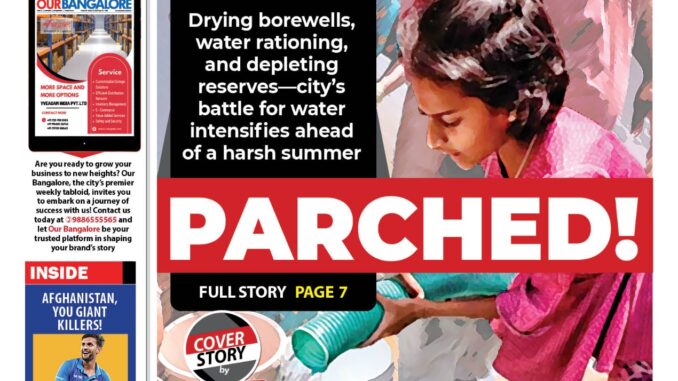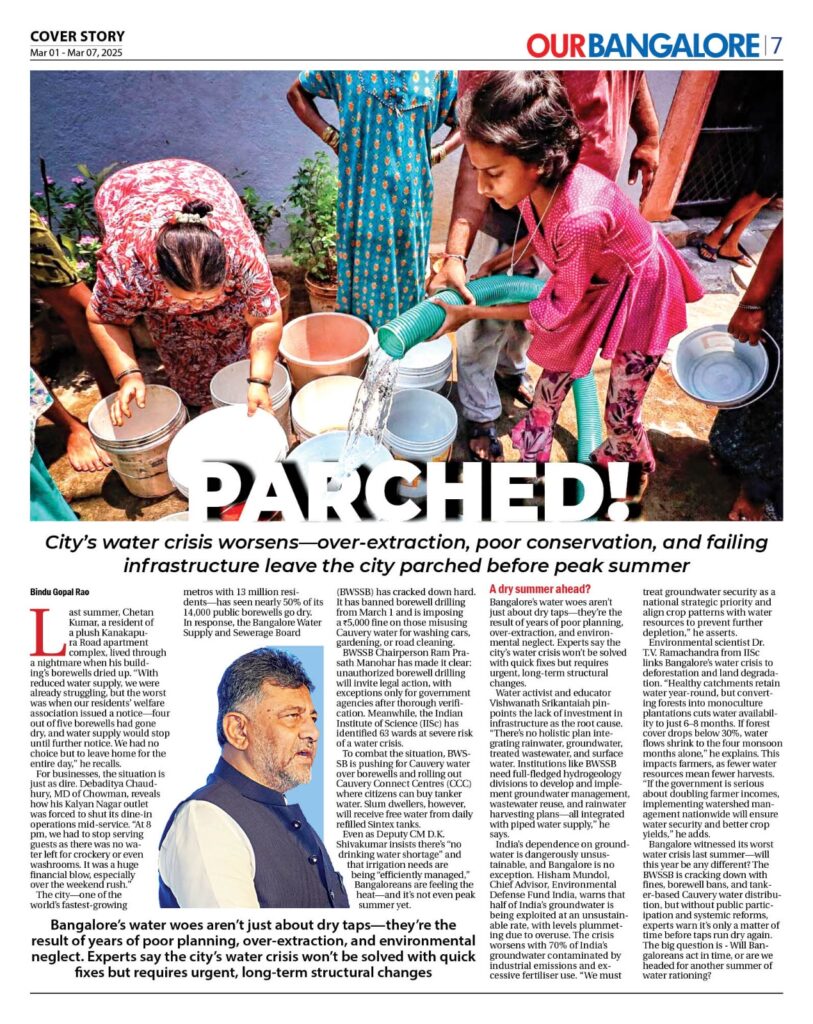
The grim water scenario in Bangalore comes to the forefront once again this summer, the onset of which is sooner this year and is expected to be harsher.
To make matters worse, a map that indicated the built up area of Bengaluru was up from 7.97% in 1973 to 93.3% in 2020, went viral sparking debate over the city’s reducing green cover. The city, one of the world’s fastest growing cities per a Henley and Partners report in March 2024 with 13 million residents saw 50% of its 14000 public borewells going dry. The Bangalore Water Supply and Sewerage Board (BWSSB) has taken some measures to save drinking water by imposing a fine of Rs 5000 on anyone using Cauvery water for non-drinking purposes like car washing, gardening, cleaning of roads and the like under the BWSSB Act 1964, sections 33 and 34.
“The Indian Institute of Science (IISc) has done a survey on borewell levels and have identified 63 wards where there is likely to be a water crisis. Hence there is a need to reduce usage of borewell water and BWSSB is pushing usage of Cauvery water instead of borewell water. BWSSB is setting up Cauvery Connect Centres (CCC) where they will provide Cauvery water in tankers and people who want the same can pay and get the tankers. The idea is to reduce people using borewell water as this can reduce extraction rate of groundwater levels. From March 1, borewell rigging will be stopped in Bangalore. BWSSB has several sewage treatment plants (STPs) across Bangalore that supply treated water to use in construction activities. For slum dwellers we have set up Sintex tanks that will be refilled by BWSSB every day without cost so that they won’t face the brunt of the water crisis,” says a BWSSB spokesperson.
Read the full story that first appeared in Our Bangalore dated March 01-07, 2025 here:


Leave a Reply